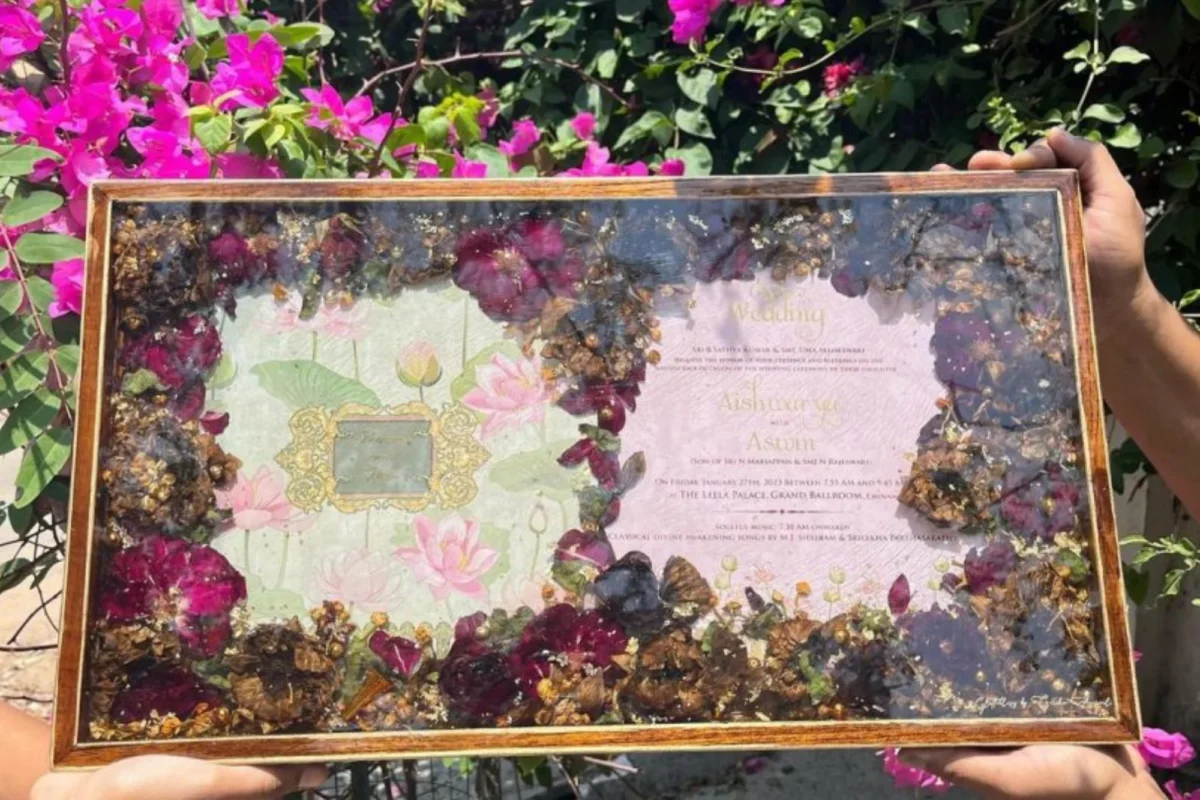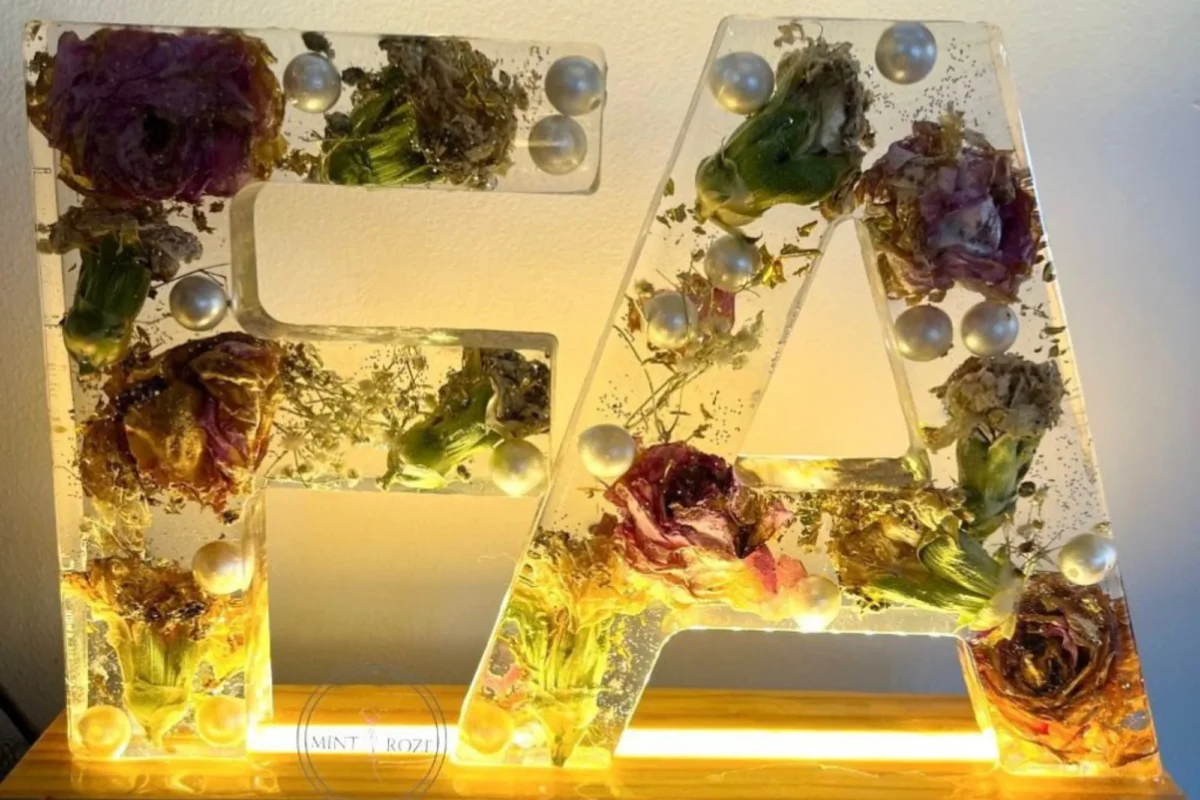After all the celebrations are over, many couples tend to be in a dilemma regarding how to keep their varmalas as a memory of that magical moment for a long period.
One of the most special moments of an Indian wedding is the varmala ceremony. When the bride and groom exchange garlands, it symbolises their acceptance of each other and marks the beginning of their journey together. This comprehensive guide, created by our team at Wedding Affair, explores creative and practical ways to keep your varmala beautiful for years to come.
Table of Contents:
- Varmalas Preservation: Why It’s a Necessity
- Traditional Methods of Varmalas Preservation
- Advanced Expert Techniques of Preservation
- Preserved Varmalas: Some Creative Display Ideas
Varmalas Preservation: Why It’s a Necessity
Your varmala was the holy instant when you both accepted each other in front of the world. Unlike other things of your wedding day that fade in the memory, the varmala, if well-preserved, will continue to remind you of it. Flowers, specially chosen and arranged with great skill, have an emotional attachment and sentimental value beyond the material value. Preserving the varmala allows revisiting that lovely moment anytime, which makes it a prized heirloom for coming generations.
Read Also: Make Your Wedding a Kid-Friendly Wedding They’ll Love
Traditional Methods of Varmalas Preservation
- Air Drying Your Varmala
The most traditional method for preserving varmalas is air drying. This method is particularly effective with hardier flowers, such as roses, marigolds, and carnations. To air dry your varmala, you will need to hang it upside down in a dark, dry, well-ventilated room away from direct sunlight. The process takes approximately two to three weeks, depending on humidity levels and flower types.
Allow the varmala to dry in a location where there is good air movement but not directly in line with fans or air conditioning blowing too hard. Once it is fully dried, it can be framed in a shadow box or preserved in some sort of container. Air-dried flowers fade in color but retain much of their shape and produce a lovely, vintage appearance.
- Pressing Flowers from Your Varmala
It is an age-old technique called flower pressing, excellent for creating flat keepsakes of your varmala. Gently take off single flowers from your garland and place them between sheets of parchment paper inside heavy books. Replace the paper every few days to avoid moisture building up and mould.
In two to three weeks, your pressed varmala flowers will be ready for various creative projects. You can frame them, make greeting cards, bookmarks, or compile them in a decorative album. This works exceptionally well in the case of some very delicate flowers, like orchids and jasmine, which would get damaged with other preservation techniques.
Advanced Expert Techniques of Preservation
- Freeze Drying Your Varmala
Freeze drying is a modern means of preserving the varmala, where the shape, colour, and even the texture of the flowers are preserved remarkably well. Professional preservation services use specialised equipment to remove moisture from flowers while they’re frozen, preventing cellular collapse.
A freeze-dried varmala looks almost like fresh flowers and may last for decades with proper care. Although this is more expensive than making your own, the results are remarkable. To most couples, freeze drying is worth investing in because their varmala remains as beautiful as it was on their wedding day.
- Resin Preservation for Your Varmala
The encapsulation of your varmala flowers in resin forms a crystal-clear, permanent preservation that is both beautiful and durable. Professional artisans can embed individual flowers or sections of your varmala in resin to create stunning decorative pieces in the form of paperweights, coasters, jewelry, or wall art.
Resin preservation safeguards your varmala against dust, moisture, and deterioration, turning it into a creative modern display. It enables you to incorporate your varmala into functional items that you will use every day, keeping those memories nearer.
- Silica Gel Drying Method
Silica gel: It is an efficient desiccant for preserving your varmala, offering better results in maintaining flower colours compared with air drying. You can buy silica gel from craft stores. Completely bury your varmala flowers in silica gel in an airtight container. The silica absorbs moisture fast and dries flowers in about five to seven days.
This method preserves the three-dimensional shape of your varmala flowers better than pressing, at the same time being less expensive than freeze-drying. Once dried, gently brush the silica gel off and then house your varmala in a case to protect it from reabsorbing moisture.
Preserved Varmalas: Some Creative Display Ideas
- Shadow Box Display
A customised shadow box offers an elegant means of protecting your preserved varmala while displaying it with pride. You should select a deep frame that will accommodate the dimensions of your garland and line it with a fabric that reflects your wedding colors. You can display the entire varmala in a round arrangement or show the most beautiful portions.
Add your wedding date, names, or a meaningful quote to personalize the shadow box. UV-protective glass prevents fading, ensuring your varmala display stays vibrant for years. Shadow boxes work great with air-dried, freeze-dried, or silica-dried varmalas.
- Preservation of the Glass Dome
The varmala placed under a glass dome is very elegant and museum-like, a real keepsake from the Victorian era. A perfect fit is a round varmala or sections of flowers that are nicely arranged. The glass keeps your varmala dust-free and safe from environmental elements, making it a most romantic focal point in your home.
Mount the dome on a decorative base with your wedding details engraved on a small plaque. This preservation method works best for freeze-dried or carefully air-dried varmalas, which maintain their three-dimensional shape.
- Making Jewellery out of Varmala Flowers
Get flowers professionally set in resin jewellery to transform your varmala into keepsakes that you can wear. Pendants, earrings, bangles, and rings containing petals from your wedding garland keep that memory close to you wherever you go.
Many artisans have expertise in making varmala flowers into customised jewellery, from minimalist modern designs to traditional ornate ones. This is the perfect option if you want to preserve your varmala in multiple forms: you keep the main garland displayed, and wear a portion as jewellery.
Read Also: Pre-Wedding Photoshoot Destinations for This Season
Frequently Asked Questions
Q1: How soon after the wedding should I start preserving my varmala?
Begin the preservation process within 24-48 hours after your wedding for the best results. Fresh flowers preserve better than wilted flowers, so don’t wait. If this isn’t possible, keep your varmala in a cool, dark place and stems in water to maintain freshness until you are ready to start the process.
Q2: Which flowers from the varmala preserve the best?
Most roses, marigolds, carnations, and chrysanthemums preserve very well through most methods. Orchids, lilies, and jasmine are more delicate but work well with pressing or freeze-drying. Whatever the method is, thick and sturdy flowers generally preserve better than thin and delicate blooms.
Q3: How long does a preserved varmala last?
If properly looked after, a professionally preserved varmala will last 20-30 years or longer. Typically, air-dried varmalas last for around 5 to 10 years before serious deterioration; freeze-dried ones, however, can remain beautiful for decades. Proper storage away from sunlight and moisture extends preservation lifespan significantly.
Q4: Can I preserve an artificial or mixed varmala?
Yes! Artificial varmalas do not need any preservation at all. Just clean and display them. In mixed varmalas containing both real and artificial flowers, the real flowers should be preserved, while artificial ones can be cleaned and kept for the final display without extra processing.
Q5: Can I preserve a varmala that’s already wilted?
Partially wilted varmalas can still be preserved, though results won’t be as vibrant as fresh flowers. Remove completely dead or moldy flowers before preservation. Pressing works better for wilted varmalas since shape has already been compromised in three-dimensional methods.









